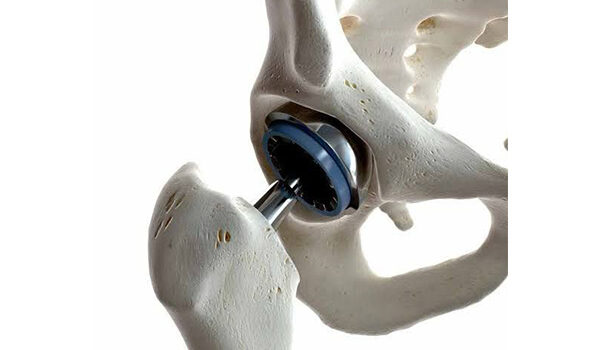There are a lot of important aspects when it comes to recovery after surgery, especially a major one such as hip replacement How should you prepare? What challenges should you expect? Will you need a caregiver?
All of this takes careful planning among your healthcare team, you and your family members. Joint Replacement surgeon Dr Gaurav Gupta from Jhansi, an expert in robotic joint replacements, answers some common questions and shares tips about hip replacement recovery and rehabilitation.
When can I go home after a hip replacement?
“Most patients can start walking and can go home a few days after the surgery,” says Dr Gaurav Gupta from Jhansi. Most people don’t need bed rest. In fact, moving your new joint helps in faster recovery.
If you have a pre-existing medical condition (a heart or lung condition that needs monitoring), or people who have had complex surgeries or lack support at home may have to be in bed for longer.
Will I need to use a walker at first?
Your healthcare team, which includes your surgeon, physiotherapists and primary care doctor, will evaluate the need for any assistive devices. To reduce falls, you might need a cane or a walker if you feel unbalanced walking on your own, but it’s generally not necessary to use them.
When will my hip incision heal?
“The incisions for a hip replacement surgery nowadays are very small” explains Dr Gaurav Gupta. The incision is covered with a dressing and takes about six weeks to heal. During this time, to reduce the risk of infection, bathing should be put off until the wound fully heals, say about two weeks.
How soon does rehabilitation start after the hip surgery?
“Patients will have physical therapy before the hip replacement surgery, and then work with a physical therapist right after the surgery to reinforce exercises before they go home,” says Dr Gaurav Gupta, Joint Replacement Surgeon. Rehabilitation will continue a few days after the surgery, with some home exercises.
Rehabilitation begins with getting used to regular movements and practicing daily activities, like getting out of bed or a chair, and progresses to practicing more difficult tasks, such as climbing stairs and getting in or out of the car.
Muscle strength plays a big role in being able to perform these and other tasks. This is why resistance training of hip muscles and knee muscles in the legs is a major component of rehabilitation.
Hip and Knee Replacement at Jhansi Orthopaedic Hospital
The JOH Hip and Knee Replacement program features a team of orthopaedic specialists highly skilled in joint replacement procedures. Our team at Jhansi will guide you through every step, from pre-surgical education to postsurgical care and physical therapy. Our goal is to return you to your desired level of activity as soon as possible.
What is considered a “normal” amount of pain after a hip replacement surgery?
Some swelling and initial pain at the joint are normal after hip replacement. To help reduce pain:
Take time to rest between therapy sessions. Ice the leg and the incision site.
Take anti-inflammatory medications, after consulting with your doctor, to help with these symptoms.
“Keeping the leg elevated above the heart when you lay down can also help the swelling to recede,” advises Dr Gaurav Gupta
It’s important to pay attention to your pain levels. If you feel like you are consistently at a 6 or more on a 1-10 pain scale, mention it to your doctor, because it could be a sign of infection or another complication. As you continue physical therapy, your pain levels should slowly decrease to about 1 or 2 in 12 weeks after the hip replacement.
How long does it take to recover after a hip replacement?
“On average, hip replacement recovery can take around two to four weeks, but everyone is different,” says Dr Gaurav Gupta. It depends on a few factors, including how active you were before your surgery, your age, nutrition, preexisting conditions, and other health and lifestyle factors.
“Achieving a certain level of activity before you have the surgery can help you bounce back more quickly,” shares Dr Gupta. “We use a regimen called prerehabilitation, or prehab, to help patients get in a physical shape that will set them up for a successful recovery.”
How soon can I return to regular activities after a hip replacement?
The goal of physical therapy is to get you back to your normal life, whether it’s going to work, playing with kids, or engaging in your favorite sport or hobby. Depending on the amount of physical activity a task requires, the amount of time it will take to be able to perform that task differs.
Driving. If you had surgery on your right hip, it may take up to a month to be able to drive safely again. If it was your left hip, then you might be back in the driver’s seat in one or two weeks. Start in a parking lot and slowly move to rural roads, working your way up to the highway. Taking medications that may impair your coordination, such as opioids, might delay how soon you can go back to driving.
Work. If you have a desk job with minimal activity, you can return to work in about two weeks. If your job requires heavy lifting or is otherwise tough on the hips, it is recommended to take off about six weeks to recover.
Sports. You should wait about six weeks to get back in the game. Before getting into a pool, you should also wait about six weeks until the incision completely heals.
Sexual Activity. You can return to sexual activity whenever you feel comfortable.
What could slow down my recovery?
“As with any surgery, there is some risk of complications during and after a hip replacement, which may include infection at the incision site, bone fractures and hip dislocations,” explains Dr Gaurav Gupta. If you notice a fever, drainage from the incision site, difficulty moving your hip or severe pain that is not relieved by your medication, contact your doctor immediately.
Taking rehabilitation at a comfortable pace and avoiding sudden, sharp movements can help prevent dislocations and falls that may delay the recovery.
How long will my hip replacement implant last?
Unlike older implants that were metal, modern hip prosthetics are made of a combination of metal, plastic and ceramic parts, so they are more durable and cause fewer issues. These implants can last 20 to 30 years, and the risk of failure and the need for repeat surgeries is low.
How long after replacing one hip should I wait to replace the other?
“If you suffer from severe arthritis in both hips, you could get both joints replaced at the same time (double hip replacement). This might actually be safer and lead to quicker recovery in some patients,” says Dr Gaurav Gupta from Jhansi Orthopaedic Hospital.
Recovery is actually shorter but may require double the effort, because you would need to strengthen both legs at the same time. It may also be more challenging to get around the house initially, so you might need more support at home.
If you want to have two separate hip replacement surgeries, it is best to wait at least six weeks between the replacements to lower the risk of blood clots.
Visit us on www.docgauravgupta.com, www.joh.co.in


